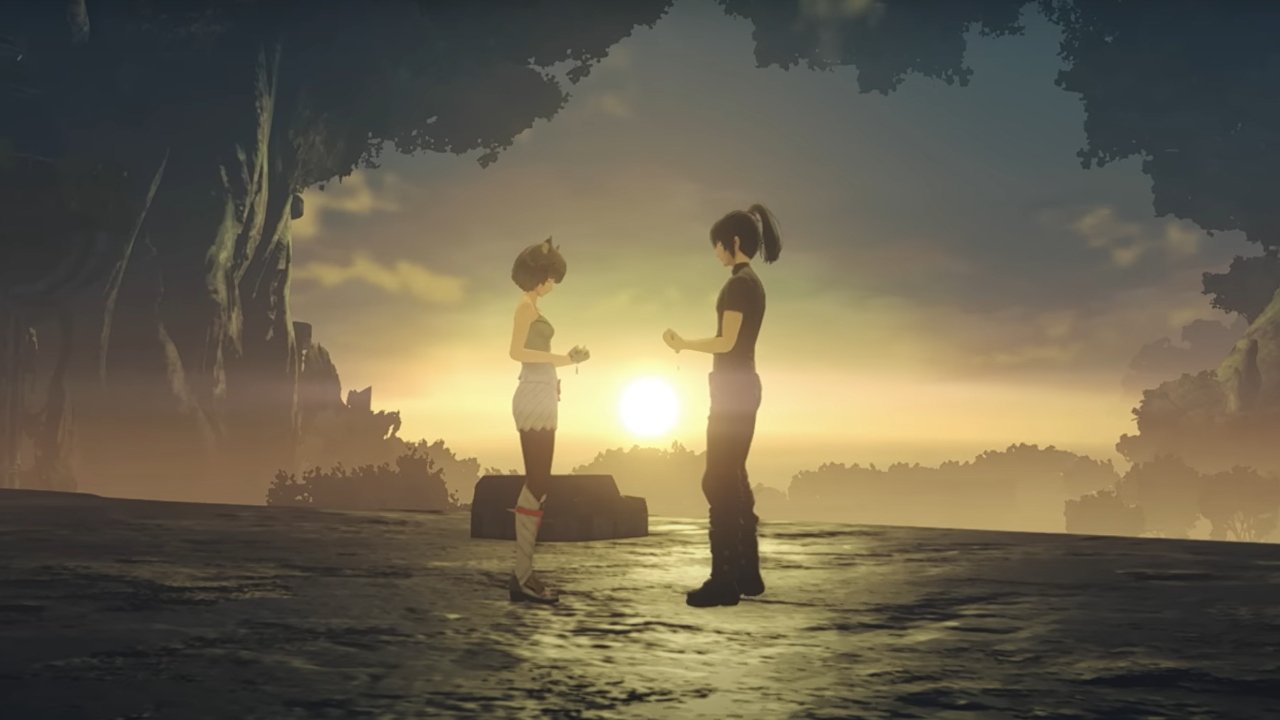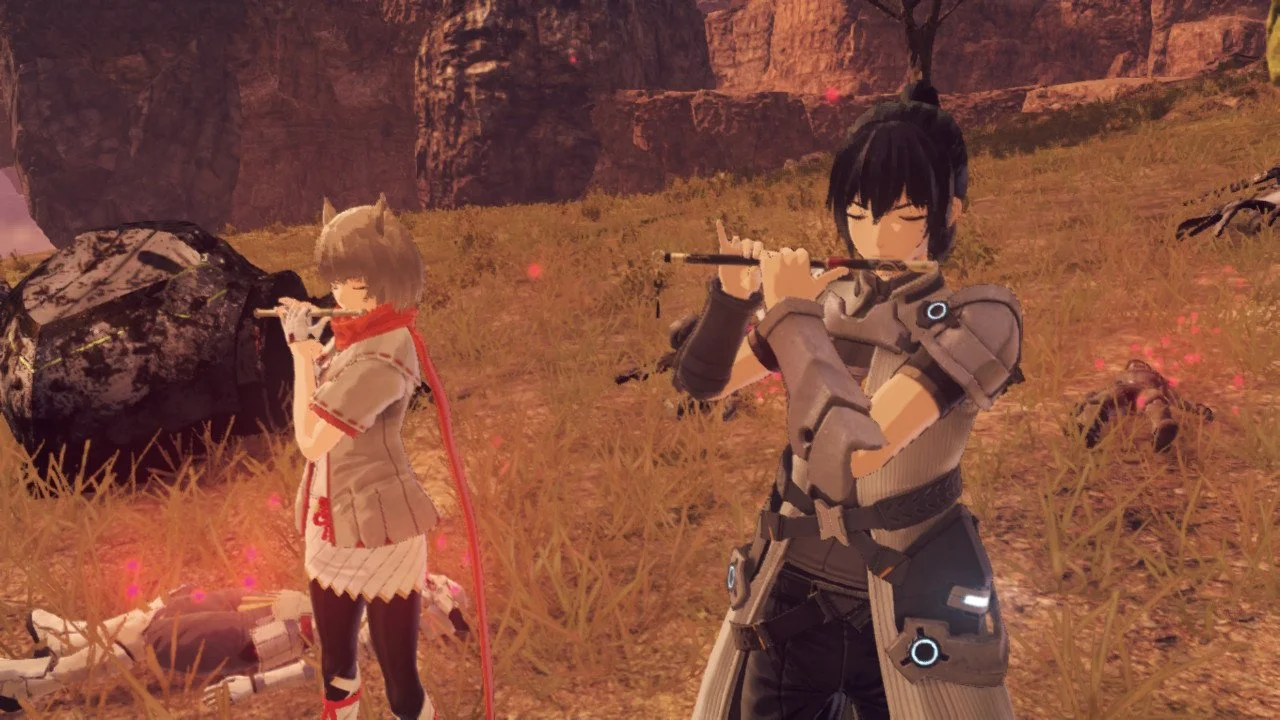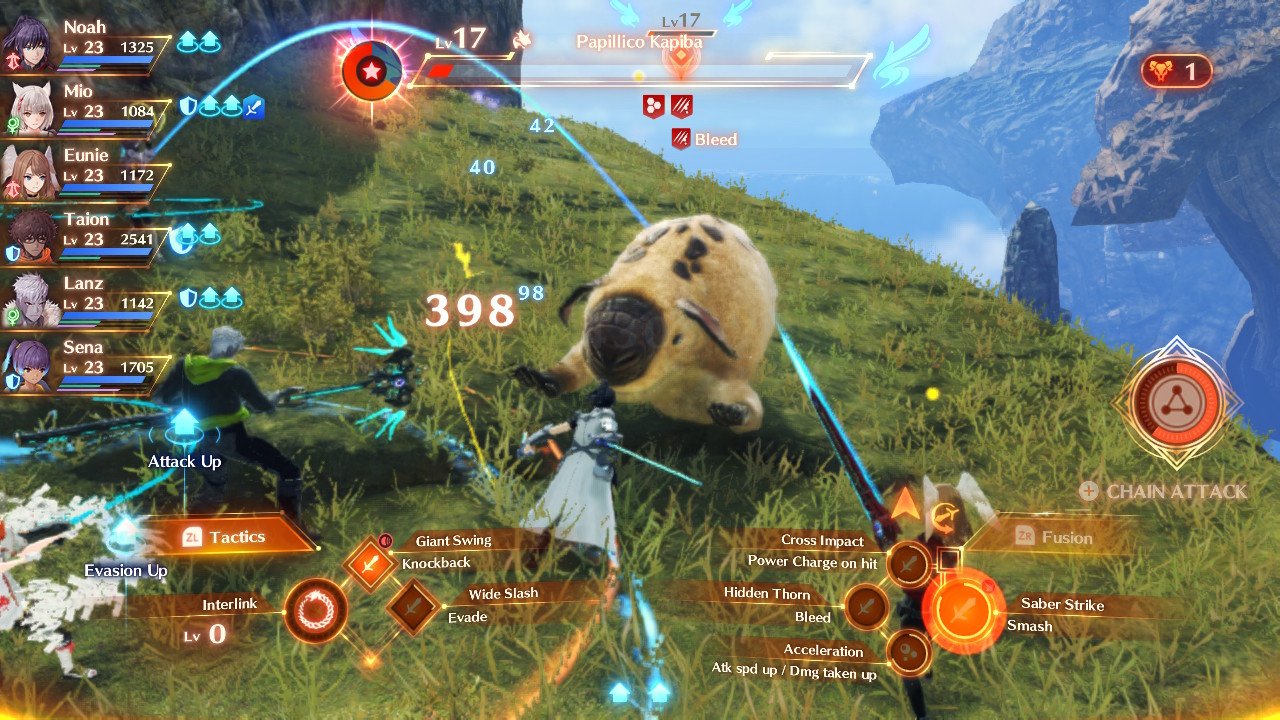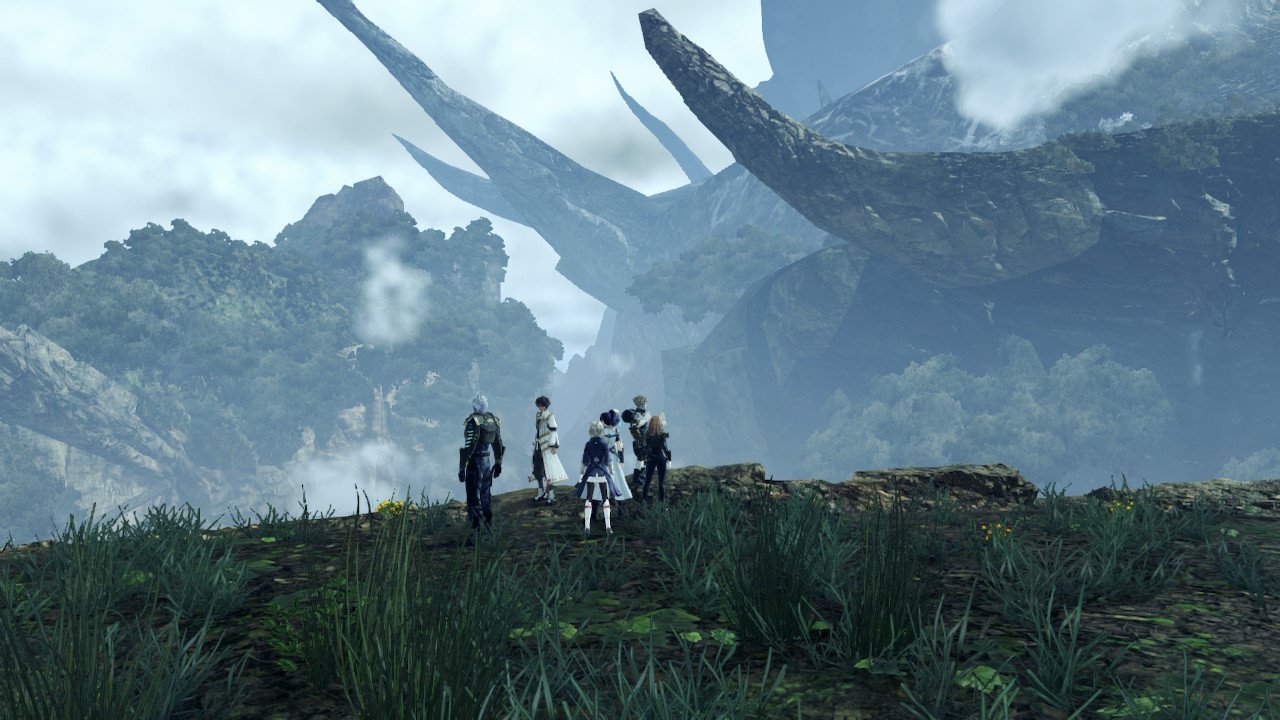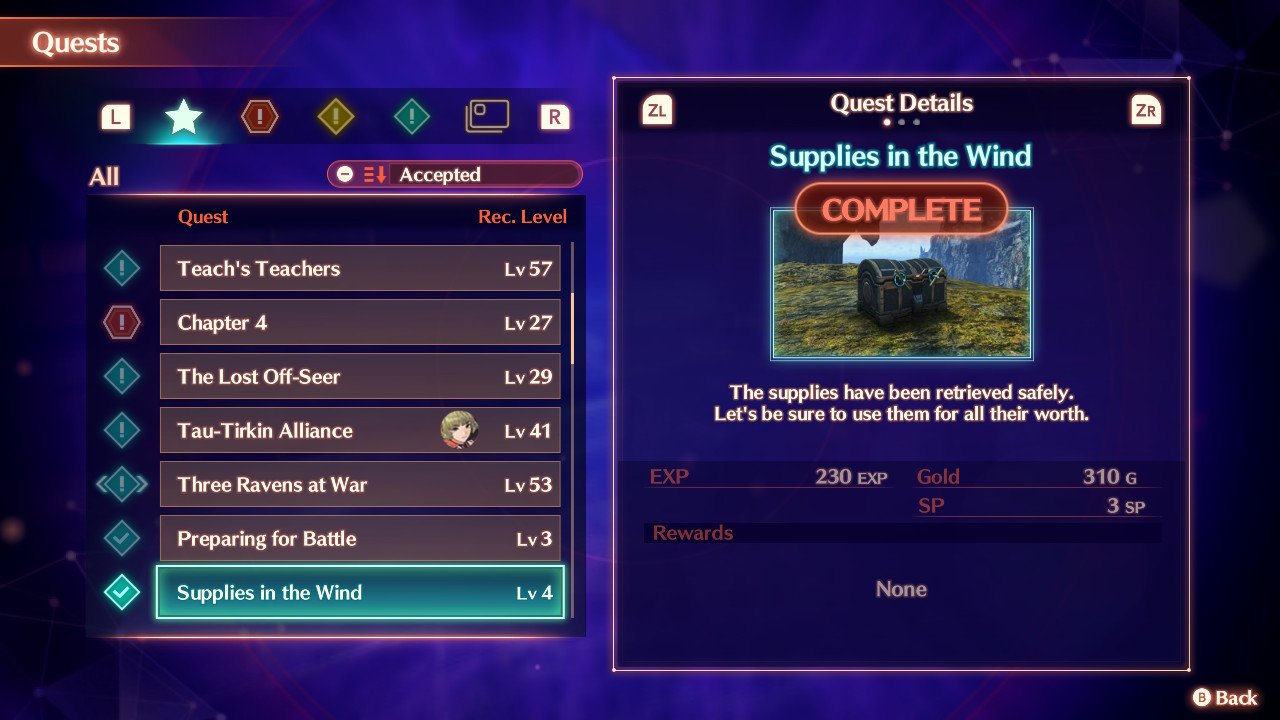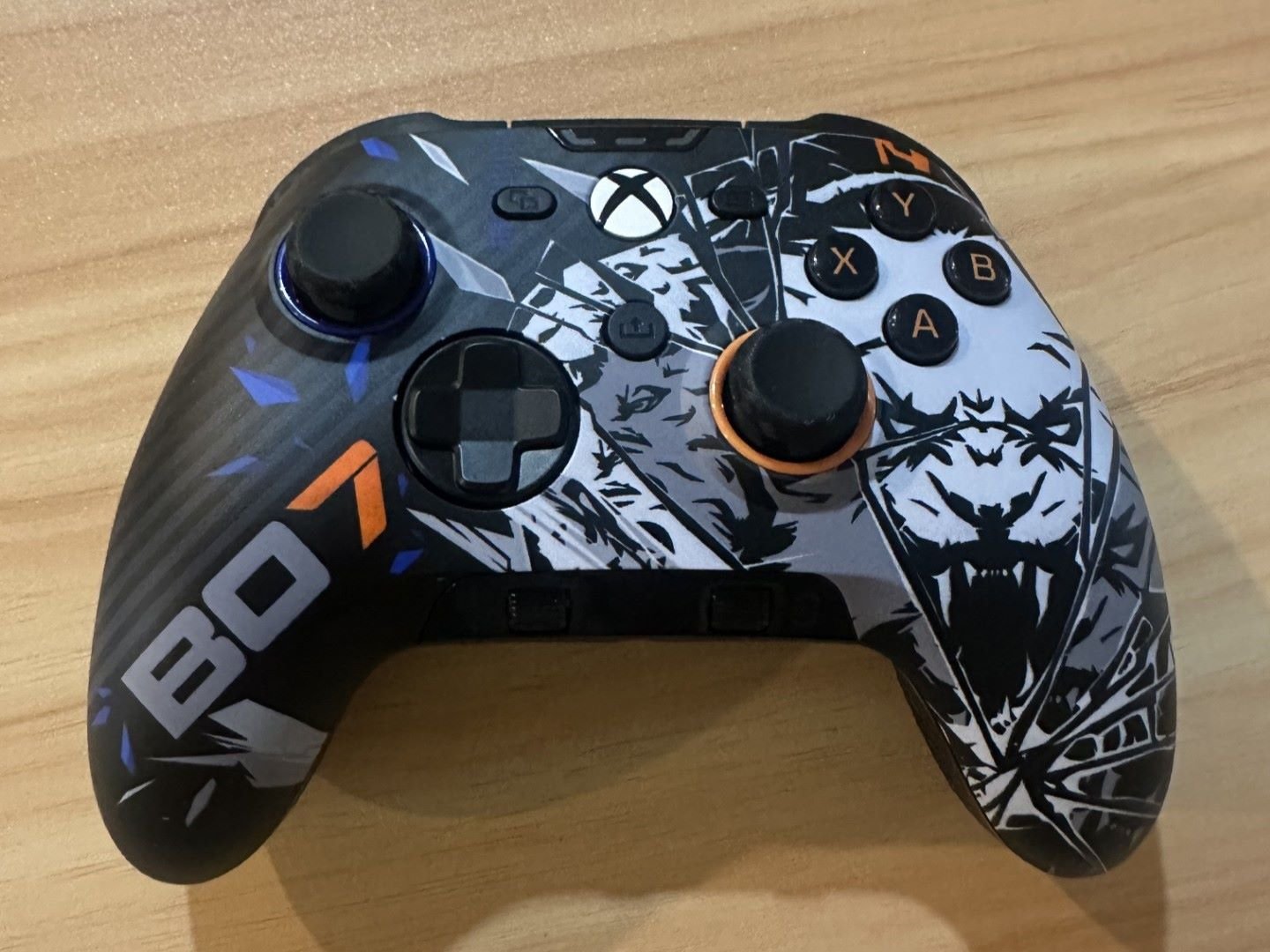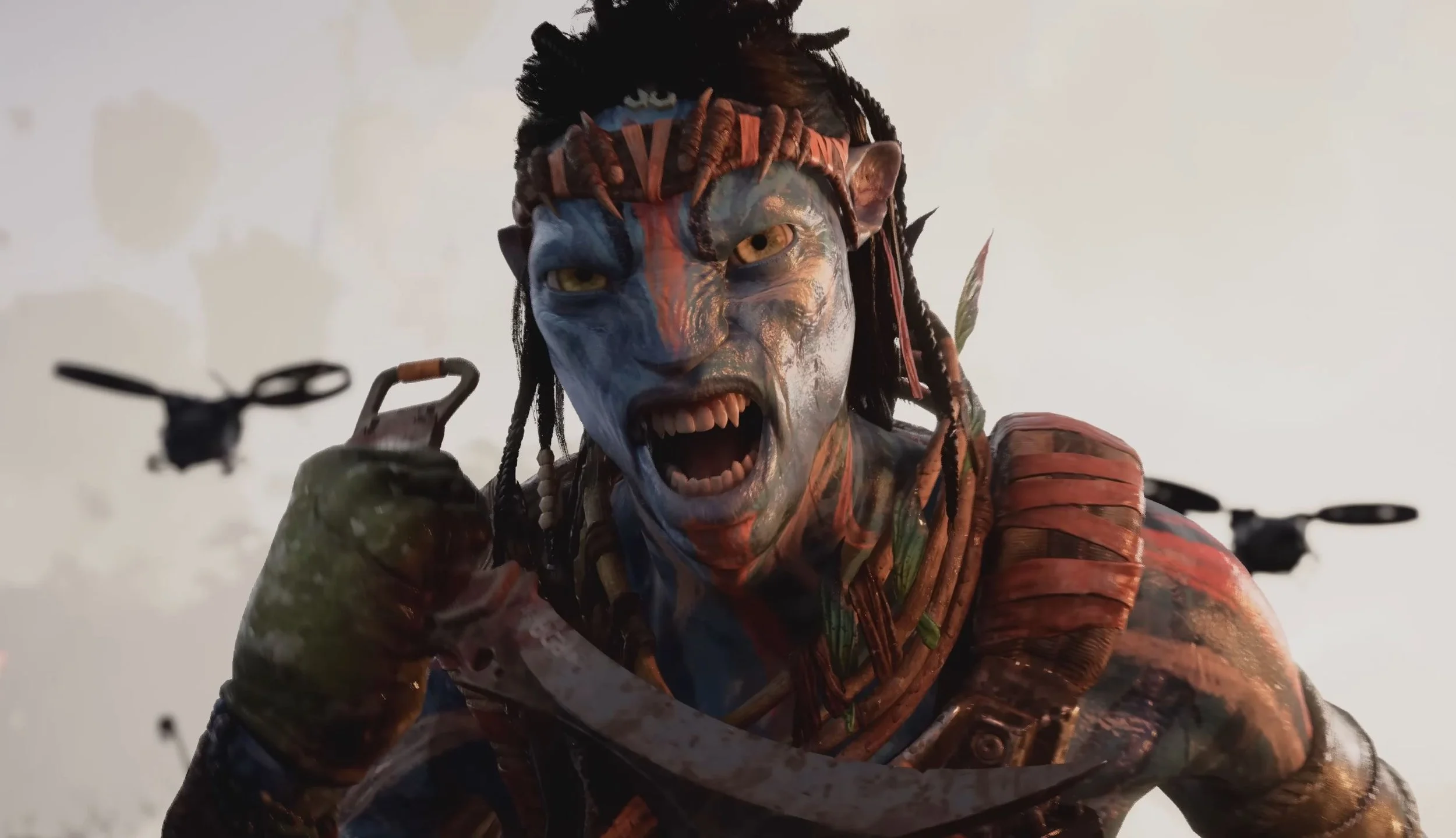Nintendo Switch Review code provided by Nintendo
The Xenoblade series has always been a bit of a polarizing series among RPG fans; some love the grand stories and breathtaking worlds, while others harp on the cheesy voice acting and uneven combat mechanics. Monolith Soft, the in-house developer of Xenoblade, seems to have taken much of this feedback to heart for their latest entry, Xenoblade Chronicles 3.
Xenoblade Chronicles 3 includes just about everything good from the previous entries in the series while also introducing some new and enjoyable mechanics of its own. The result is a solid JRPG that will undoubtedly thrill longtime fans of the franchise while also opening the door to an entirely new generation of gamers.
Story
Xenoblade Chronicles 3 opens with the bleak observation that everyone in the world is destined to die after just ten years. Furthermore, everyone is shackled to devices known as Flame Clocks that determine if they’ll even make it the full ten years. To fuel these clocks, the residents of two rival nations spend their entire lives in a never-ending war, slaughtering one another for the promise of just a few more years.
In the midst of all this is the core cast: Noah, Lanz, Eunie, Mio, Taion, and Sena. Three hail from the nation of Keves, while the others call Agnus home. That is until they happen upon a strange man bearing a weird device that transforms all six characters into beings known as Ouroboros. This catalyzing event is what really sets the game in motion, and it takes around six hours to even reach that point.
The story moves along by guiding the player from one colony to the next in their quest to discover the truth of their world. Along the way, they’re impeded by the Consuls, enigmatic figures who rule over both Keves and Agnus. The role of these Consuls and their connection to both Ouroboros and a mysterious entity known as Morbius is at the heart of Xenoblade Chronicles 3’s story.
There are a lot of proper nouns and political interconnections to remember while playing Xenoblade Chronicles 3, but it never feels hard to keep it all sorted. There’s something effortlessly charming about every character the main characters meet that helps them stick in the memory, and it’s always a treat to backtrack and visit these old friends for some new dialogue or side quest.
The best implementation of this is the Hero system which allows players to include one of their newfound friends in their battle party. These characters could very easily have just been one-off inclusions to unlock new character classes for the main team, but Monolith’s decision to make these persistent characters was a wise one, especially with how well-written most of them are.
Good writing is a recurring theme in Xenoblade Chronicles 3, especially when it comes to the characters. The core cast is charming, well-acted, and develops over the course of the game in surprising ways. The way all six are paired off with another member creates this bond between them that allows each character to grow and learn from one another.
The one area where the game’s story falls a bit short is in the pacing. At times the game seems to fly by, often operating as if the player already knows crucial details. At other points, it slows to a crawl by demanding the player carry out a series of side quests or sit through ten minutes of superfluous cutscenes.
Gameplay
Xenoblade Chronicles 3 features the same basic combat system as the other mainline entries with a few, unique twists that make it feel a little more customizable and energetic. Combat is, at its core, an auto-battler with positional and ability control: characters execute basic attacks on their own while the player moves them around and activates special attacks.
These special attacks can have a variety of effects from healing the team to dealing massive damage to enemies. Each class has a selection of abilities to choose from, and there are over a dozen classes to unlock. Some classes are fairly straightforward in their utility while others offer a more experimental style of play.
This class system makes the combat feel versatile no matter the party makeup. Players can be bold and stack damage-dealing classes to defeat enemies quickly, or they can take a more measured approach and head into battle with a full complement of medics. There’s no wrong way to build a team.
Managing a six-person squad is a daunting proposition for almost any gamer, but it’s significantly easier here with some upgrades to the equipment systems from the first two Xenoblade games. Instead of equipment, each character can equip accessories to alter their stats and provide special boosts while in battle. Gems return in a more streamlined way from the original Xenoblade Chronicles; rather than individual items, gems are now shared amongst the entire team and can be equipped on multiple characters simultaneously.
With all of these upgrades to customization and party management, it’s a shame that combat itself still feels stiff and slow. The auto-attack triggers at a glacial pace (though there is a gem to speed this up) and with so much action happening on screen at once it can be difficult to tell if an attack is making any difference at all. This is compounded by the fact that many enemies have outrageous health pools that don’t align with their level or difficulty.
There’s also one system that should come with a bigger warning tag: bonus experience. This experience accrues naturally through exploration and camp discussions, and players can use it to level up their team while resting at a campfire. While this system might come in handy when trying to face higher-level enemies, it just as easily can result in players becoming drastically over-leveled within the game’s first few hours. Any players who enjoy the challenge of the combat should avoid using bonus experience unless absolutely necessary.
Audio and Visual
Xenoblade Chronicles 3 is one of the more visually impressive games for the Nintendo Switch, even if its world doesn’t feel quite as expansive as its predecessors. The game will frequently prompt the player to stop and appreciate their surroundings as if it’s aware that the sweeping vistas and magnificent skyboxes are stunning to behold.
On the other hand, where the previous titles in the series brought players to grand, visually distinct towns throughout the journey, Xenoblade Chronicles 3 instead boasts a series of drab colonies that are little more than war camps. And as brilliant as the rest of the world can be, there is a strange muted quality to all of the game’s colors.
On the audio side, however, Xenoblade Chronicles 3 hits every possible benchmark for exceptional design. The music is incredible, evoking just the right mood in every situation, be it battle, cutscene, or just exploring the world. The voice-acting is also quite remarkable, with some especially great performances from characters like Sena, Eunie, and Ethel. Though players may hear about Lanz’s desire for something a bit meatier after more than a few battles.
What Could Be Better
While having every member of the team on the battlefield at once is neat to see, it detracts somewhat from the actual combat experience. Enemies are either too easy or ludicrously difficult, and any actual efficacy in battle is lost in the shuffle of dozens of damage numbers and glowing rings. The larger party makes sense narratively, and Monolith Soft has done an impressive job making the combat work, but combat would feel more meaningful with a smaller group.
The quest menu could also use a few tweaks, as it can be difficult to sort to find a specific quest. The Accepted filter includes all quests, including those that have been completed, while the In Progress filter doesn’t include any quests that have been accepted but not started. This is made even more frustrating by unclear UI prompts for completed quests.
Verdict
Xenoblade Chronicles 3 is an exceptional JRPG that, in spite of a few faults, manages to surpass its predecessors in scale, narrative poignancy, and combat design. Its rich world, colorful characters, and diverse class system make it a worthy addition to any RPG fans library and cements the Xenoblade franchise as one of Nintendo’s core IPs.
